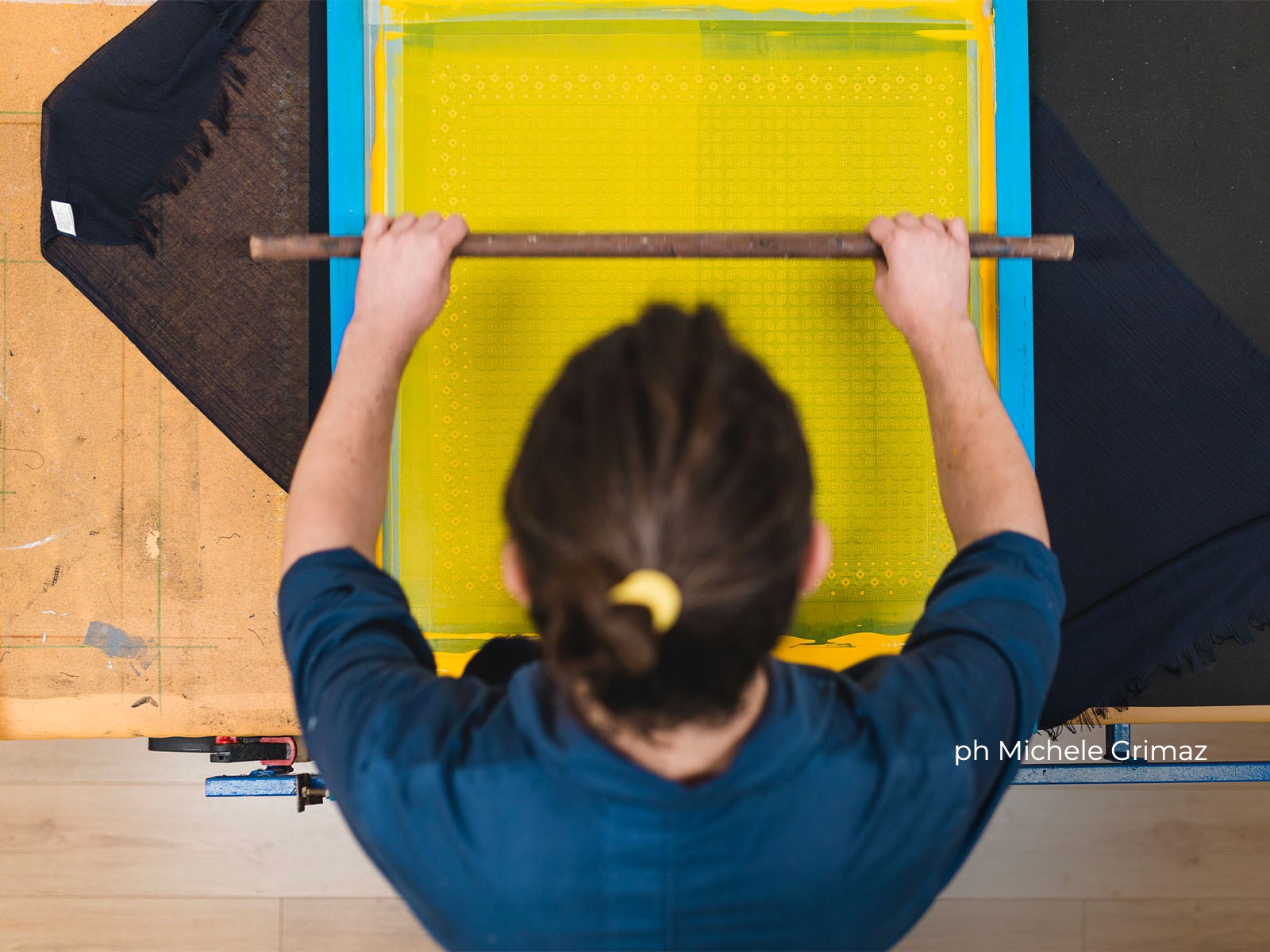
Dezen Dezen
Via E.F. Duca d'Aosta, 6b, Trieste (Trieste)
Dezen Dezen
Laboratorio / Atelier
ChatGPT said:
Just two hundred meters from the sea, and once populated by shipyards and sailors, until a few years ago this neighborhood did not have a good reputation. Today, Cavana is one of the most fascinating areas of Trieste, and it is here that Dezen Dezen has made its home, the workshop that has given new life to the large headscarves worn by women of Eastern Europe. In a maze of narrow streets, among artisan shops and small restaurants, beyond two heavy wooden doors and a glass and wrought-iron door, it feels like stepping into a painter’s studio: jars of paint, canvases that serve as silkscreen molds, aprons, and brushes. In these rooms, Marco Cernogoraz repeats every day the ancient gestures embedded in his DNA, using old family tools to harmonize fashion with tradition. Watching him at work, listening to his story, and entering the kitchen where bandanas and t-shirts are baked to fix the prints before being arranged in the showroom is a journey along the path of passion.

Events near Dezen Dezen

Dezen Dezen
Via E.F. Duca d'Aosta, 6b, Trieste (Trieste)
Zagreb, 1938. Jagica is an enterprising woman who, after working as an apprentice, starts her own business producing headscarves. It may be hard to imagine today, but at the time, headscarves worn over the hair — especially during fieldwork — were not accessories but necessities. They also carried meaning: brightly colored for young women hoping to marry, more subdued for married women; darker for middle-aged women, and black for widows, ready to be lightened again if the heart opened to a possible second husband. Patterns and colors spoke of status, belonging, and religion.
In the 1960s, her son Angelo joined the company. The screens for silk-screen printing were worn out, so he ordered new ones from Como. He also chose Italian suppliers for the fabrics because he wanted the best cotton — one that didn’t slip on the hair or echo in the ears. Together with his wife Jagoda, he brought an Italian product beyond the Iron Curtain, and its reputation spread throughout Eastern Europe. The business came to an end in the 1990s due to war, changing customs, and finally a fire.
Twenty years later, his son Marco recovered those printing frames and had them restored. It was 2014. Headscarves were no longer in use, but those prints still had an extraordinary charm. Marco began transferring them onto sweatshirts, backpacks, T-shirts, bandanas, and ties. He found his place of the heart in Trieste and chose for his workshop the name Dezen — the word used by the Turks, derived from the French dessin, meaning “design.” Dezen Dezen, twice, just like the repeated motifs printed on the fabric. Every accessory that leaves the Cavana workshop today is a unique piece — handmade, and the heir of a story.
Other events you might be interested in
Let's stay in touch
News, previews, initiatives about the world of fashion, ApritiModa and its partners




